My weekly sourdough bread bake recipes are constantly evolving and the recipe list is expanding. Every couple of weeks I like to change and try something different. Some days I like my bread with crispy crust and chewy crumb and then the other day I prefer it to be tender and aromatic. The whole grains are generally my preferred variety although occasionally do I wander in all white flour bread world as well. That is especially the case when it comes to baguettes, flat breads, pizzas, foccacia etc.
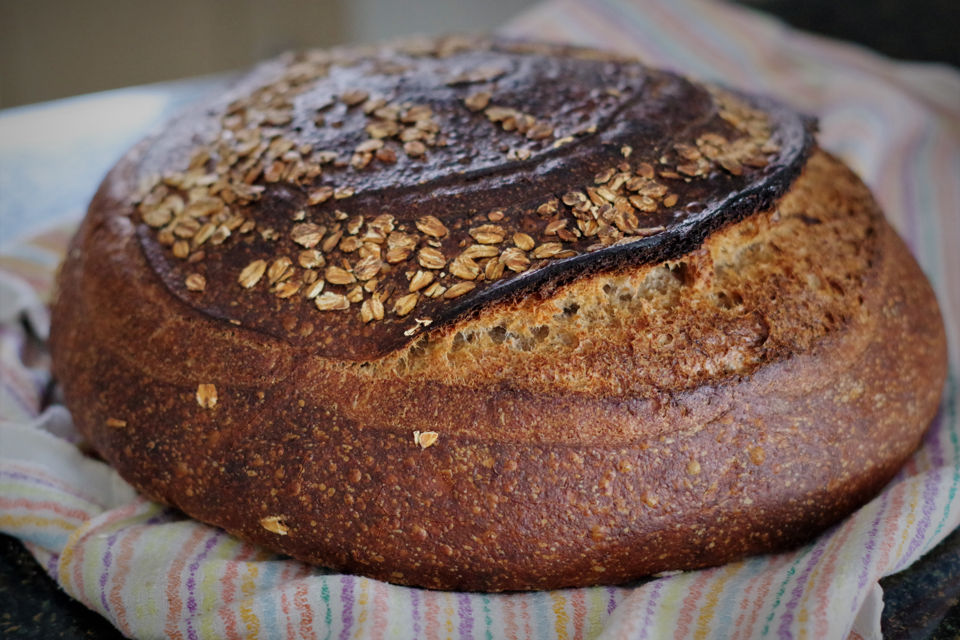
Today’s recipe is 50% whole grain with spelt, rye, whole wheat and white bread flour. The proofing basket is sprinkled with steel rolled oats which provide bread with a wonderfully pleasing country bake look. The recipe has been inspired by “The Perfect Loaf” and I slightly modified it to suit my needs and preferences. Namely, for simplicity sake, I like to bake a boule instead of loafs. Why? First, it is simpler to shape, I don’t bake large quantities at the moment and I adjusted the recipe to suit my Dutch Oven size (about 5 L) so I have options which way to bake. This works perfect for us for now.
Being 50% whole grain this bread has a nice dark crust and medium, open crumb. It is very soft and has a wonderful nuttiness to its taste. In my family we are all cheese lovers and that is where 1/4 of bread quickly disappears shortly after it is cooled off from the oven. I also like to toast it on a butter and then layer it to make an open face sandwich with smoked cheddar cheese and fried egg. It is delicious!! If I add to it some cured olives and ajvar or simple arugula salad with olive oil and balsamic vinegar that all of sudden turns into a perfect lunch option!
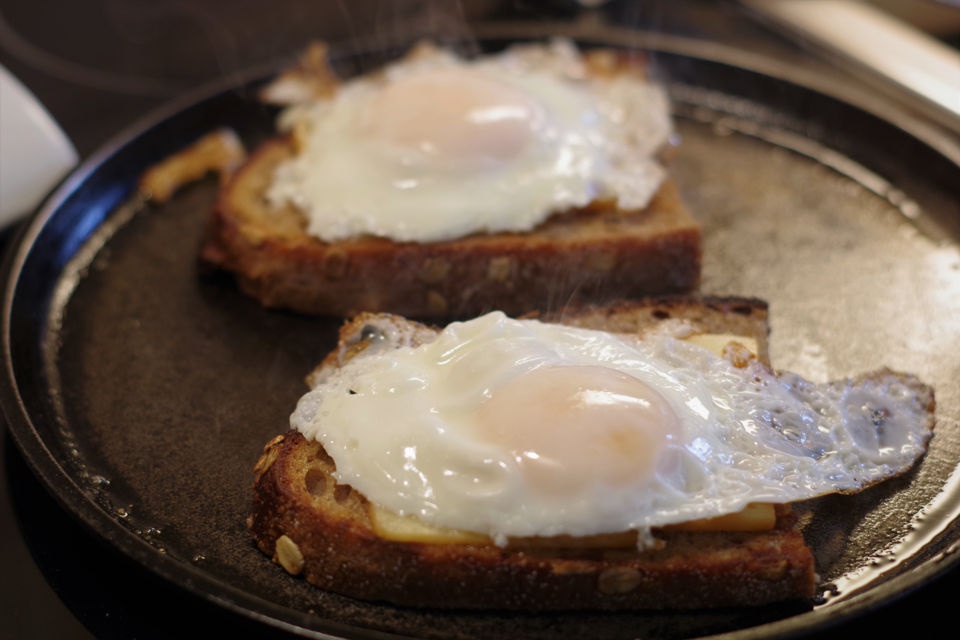
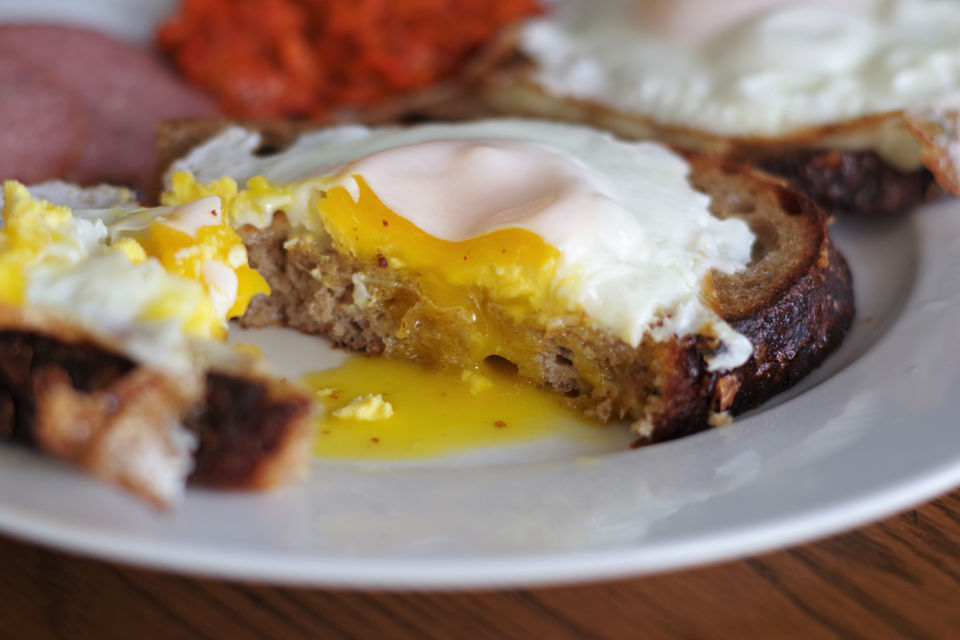
About recipe itself I would just like to warn that the dough is very wet due to very high, 85% hydration. I personally don’t have any trouble with it. The flour I use absorbs water well and I just take my time with French slap mixing technique and keep throwing the dough on the counter until I get gluten development I am looking for. Sometime that takes 5 minutes and some time as it is the case with this bread is 12-13 minutes. I think the good part of success is in your level of confidence, and that certainly builds up with practice and gained experience. Work confidently and the dough usually will responds properly.
If you are unsure or like to start cautiously then hold back about 100 ml water from the recipe and add as needed during kneading. It is always easy to add more water, but you can’t take it out.
Happy baking!
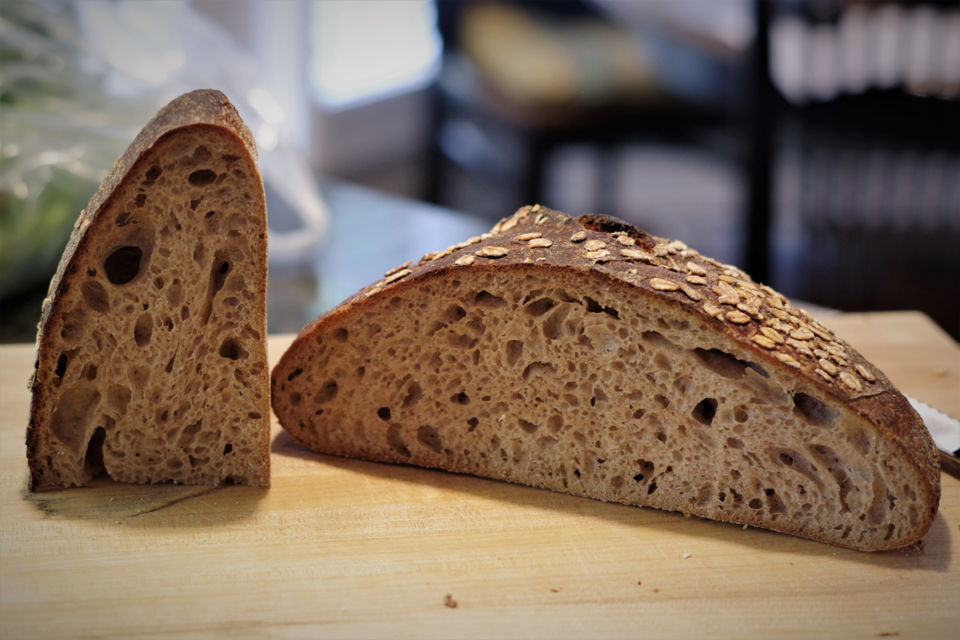
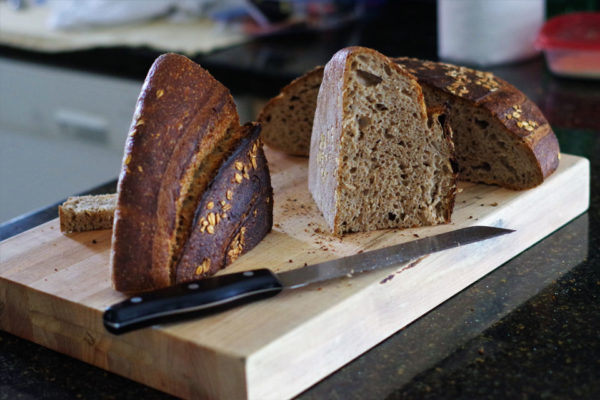
| Prep Time | 20 min |
| Cook Time | 50 min |
| Passive Time | 19.5 hours |
| Servings |
round loaf
|
- 341 g all purpose non bleached flour
- 161 g whole grain spelt flour
- 144 g whole wheat flour
- 36 g whole grain rye flour
- 574 g filtered water
- 14 g fine sea salt
- 114 g levain
- rolled oats for sprinkling
- semolina for dusting
Ingredients
Levain
Dough
Additional items
|

|
- In a small mixing bowl mix together all the ingredients, cover with plastic wrap and keep at 26ºC (80ºF).
- In a medium size mixing bowl stir together flour and water until there is no dry bits left, cover with plastic wrap and keep at 26ºC (80ºF).
- Pinch and knead levain into the dough mixture making sure it is completely unified. Using a "slap and fold" or French slap method work the dough out until it tightens up and starts to hold its shape, about 10 minutes.
- Add the salt, knead it into the dough and slap and fold the dough for another 2-3 minutes or until it it rounds up, has a shiny tight skin and it doesn't stick to hands as much.
- Transfer the worked out dough to a thick walled bowl, cover with plastic wrap. Let it ferment at 26ºC (80ºF) for approximately 3 1/2 hours. Keep an eye on the dough as you may have to shorten or extend the fermentation time depending on rise (see recipe note). Perform 3 "stretch and folds", the first one after the 15 minutes and the other 3 every 30 minutes in sequence . After 3rd stretch and fold let the dough rise for the reminder of the fermenting time.
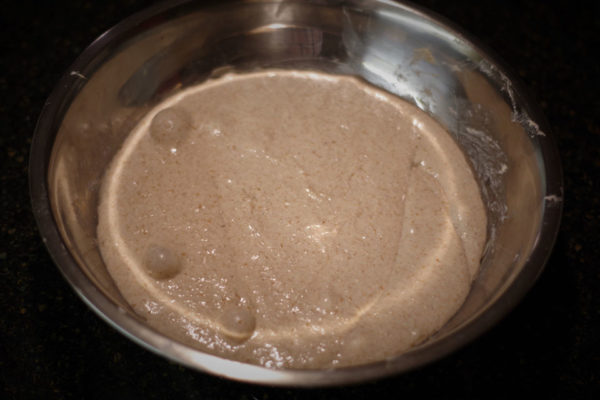
- On a lightly dusted counter pre-shape the dough. Consider this step as a dough shaping rehearsal before its final shaping. The most importantly do it confidently and quickly. Turn the smooth side of the shaped boule to the top, cover with plastic wrap and let rest on the counter for 20 minutes.
- Prepare a round proofing bread basket lined with a smooth cotton or a canvas liner. I used kitchen towels lightly dusted with rice flour to prevent the dough from sticking. Sprinkle some rolled oats to the basket.
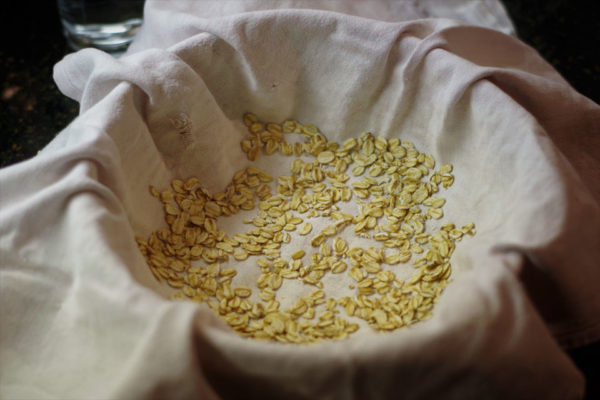
- Turn the boule smooth side down and perform a final shaping using exactly the same technique as in pre-shaping.
- Turn the boule smooth side up again, enclose with your hands and gently drag across the counter. The friction created between the dough and the counter surface will tighten the boule skin. Use your pinkie fingers to pinch the dough at the bottom and keep the skin tight.
- Transfer the boule, smooth side down to the proofing basket, cover the basket with another kitchen towel. Put it all together in a plastic bag and seal completely, refrigerate overnight.
- Preheat the oven with cast iron baking dish (Dutch Oven), or alternatively baking stone (rack in the middle) and oven proof pan (bottom rack) at 260ºC (500ºF).
- In a small sauce pan bring to boil about 250 ml (1 cup) of water.
- Take basked out of the fridge, sprinkle some semolina onto the proofed dough. Invert the basket onto a dusted peel. Using a razor blade or a sharp knife confidently score the top of the dough.
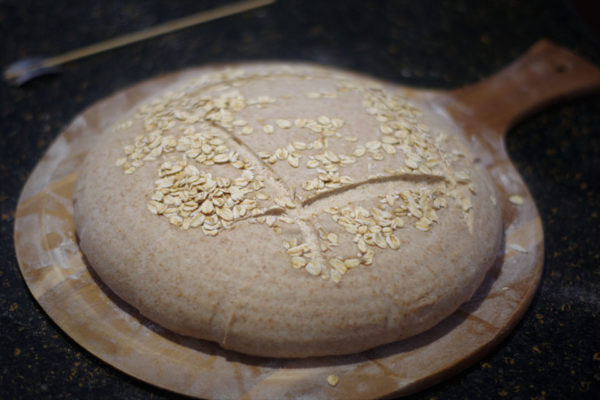
- Transfer the dough to the hot Dutch Oven, put the lid on, reduce temperature to 232ºC (450ºF) and bake for 20 minutes. Alternately transfer the dough to the baking stone and pour the boiling water in a hot pan at the bottom rack, to create a steam.
- Remove lid from Dutch Oven or alternatively briefly vent out the oven and take out the pan with water, if baking on a stone. Bake for another 30-35 minutes.
- Remove from the oven and cool off on a wire rack for a minimum 2 hours.
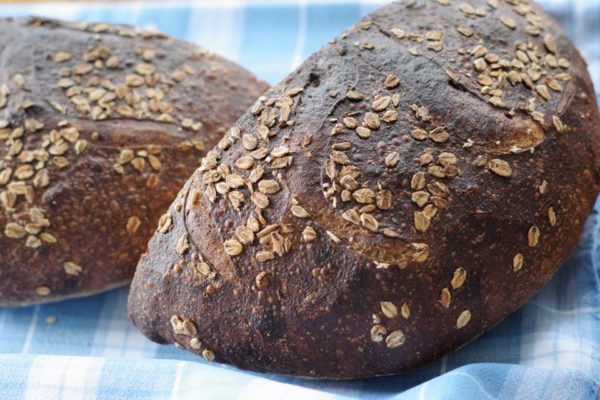
- the dough finished fermentation cycle as it about doubled its volume, its top is domed, curved around the edges where it meets the bowl.

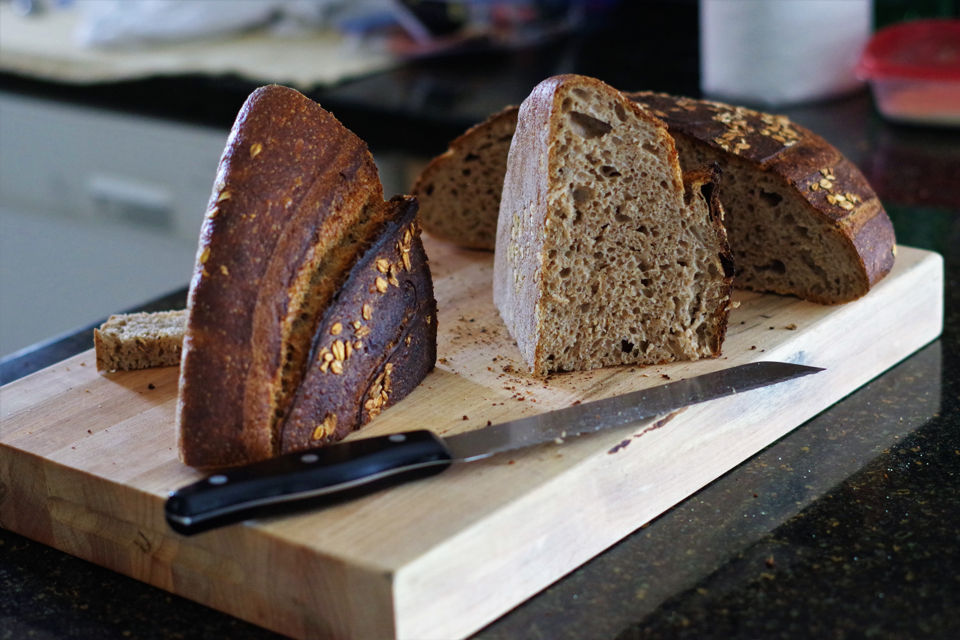
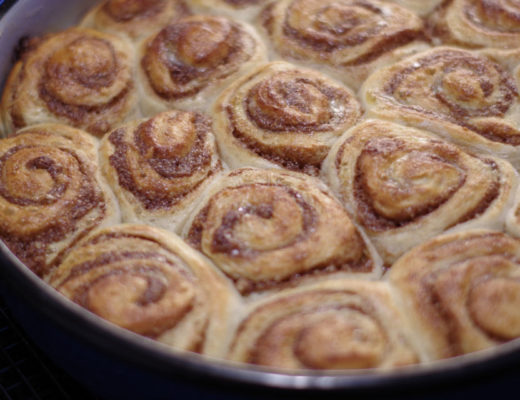
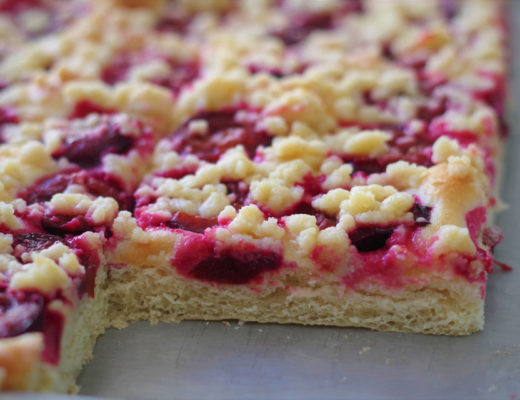
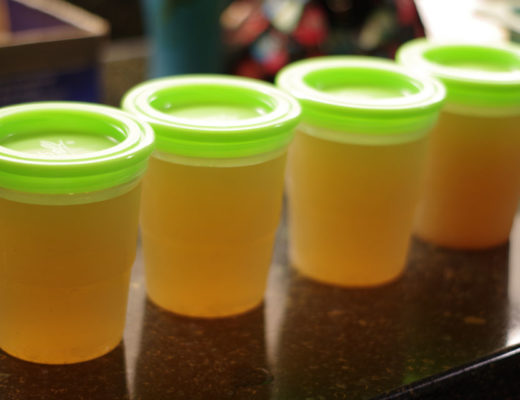
No Comments